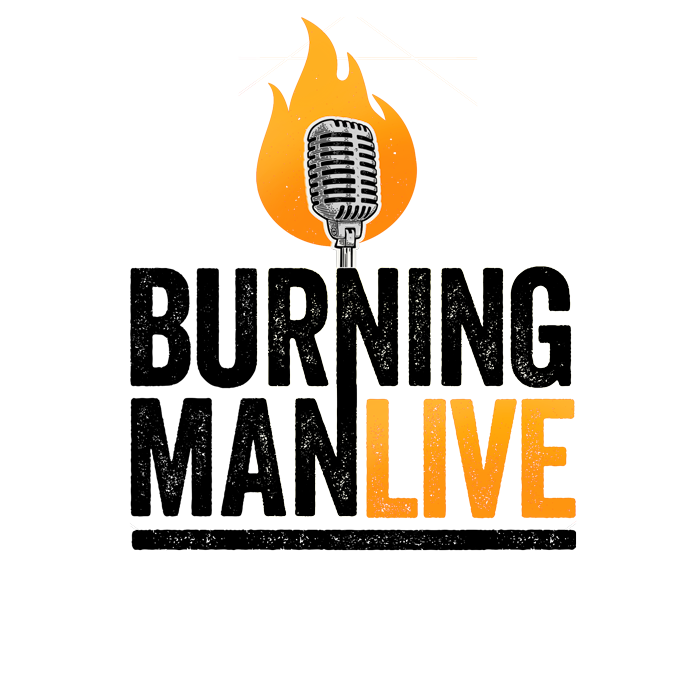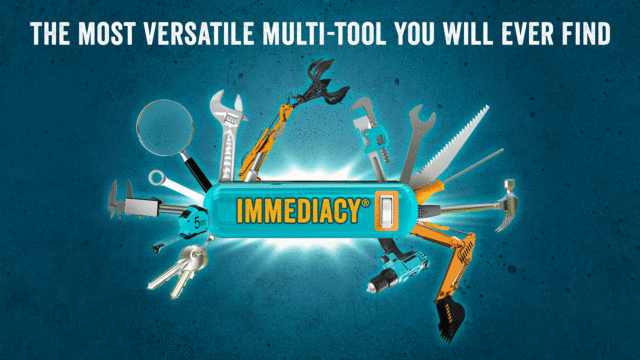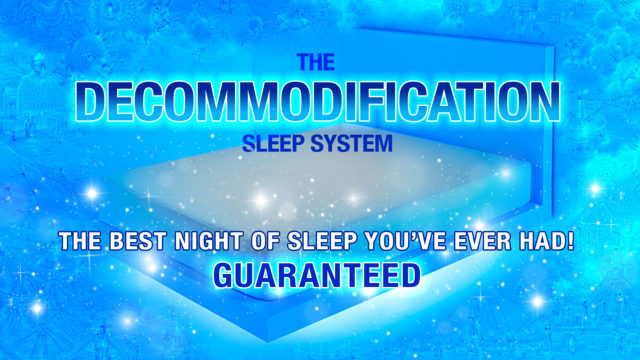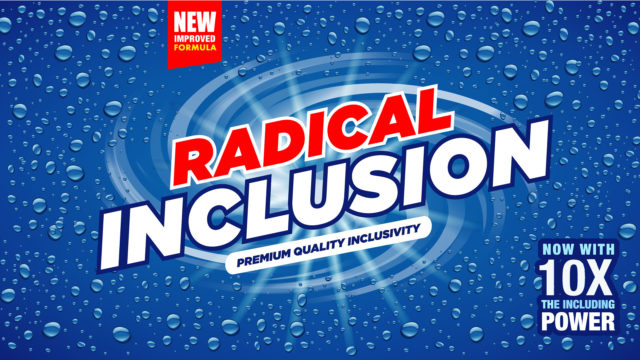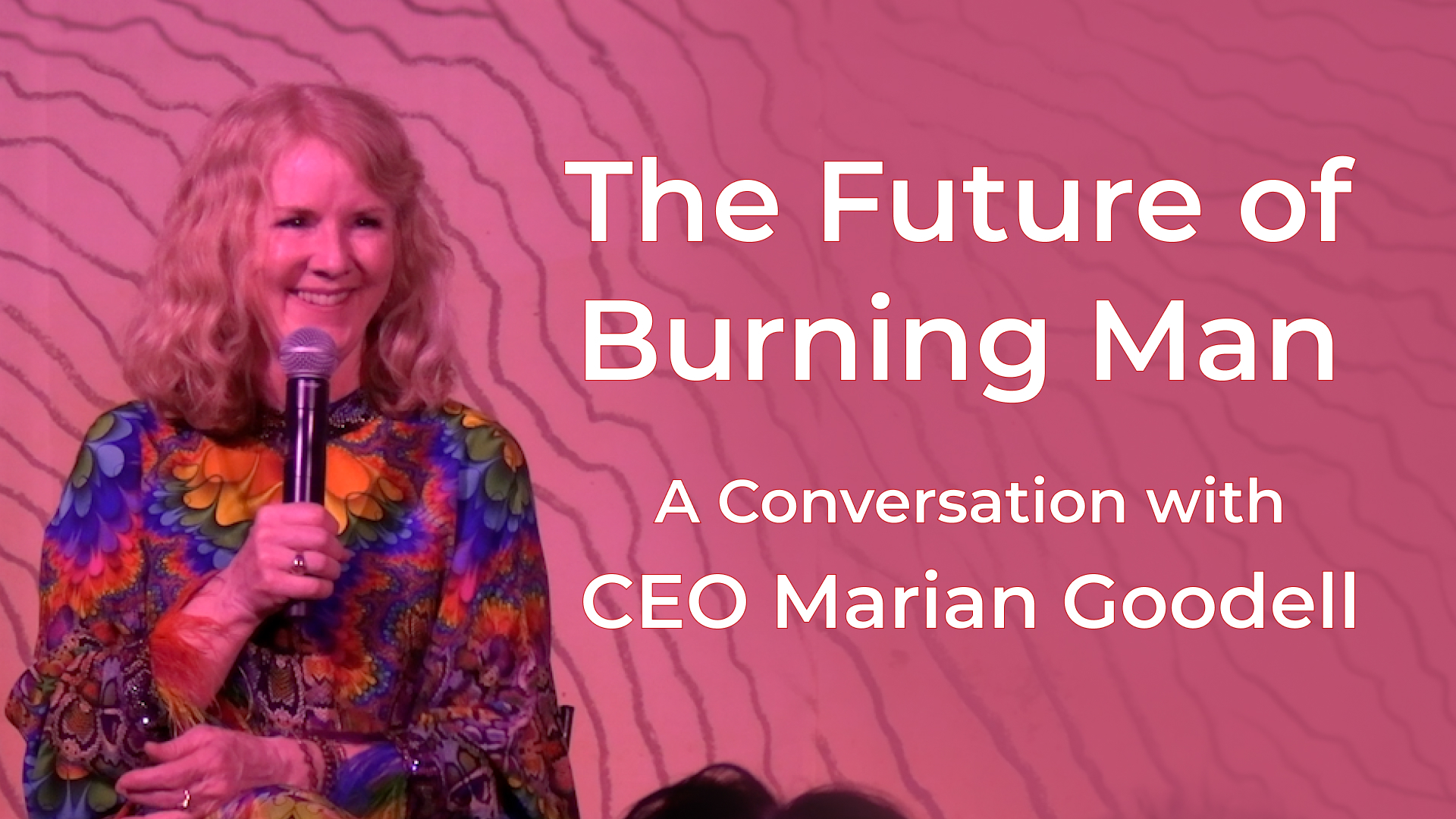
The Future of Burning Man
Marian Goodell, CEO of Burning Man Project, talks with a lively audience as part of Robot Heart’s Residency in Oakland, California. She is joined by Candace Locklear (aka Evil Pippi), Erin Douglas of the Black Burner Project, and Robot Heart’s Justin Schaffer and Satya Kamdar.
It’s casual. It’s layered. It’s a room of Burners.
What constitutes culture jamming? Where does Burning Man bridge the divide to bring people together? How have pillars of our culture evolved from awkward beginnings?
They swap stories about the perks of unbranding. They joke about gifting and regifting, and the spectrum between talismans and swag. They go off the rails into how mainstream culture plays with Burning Man tropes.
Then they go beyond making a party in the desert, out into the world, to the Regional Network as a living embodiment of ‘Each One Teach One.’ They show how collaboration creates the community. They explore actually active inclusivity, and the question “Who are we?”
Marian Goodell: Burning Man Project Board of Directors
The Future of Burning Man (video version on youtube)
Burning Man LIVE: The Evolution of Robot Heart
Burning Man LIVE: Candace Locklear on Culture Jamming and Welcoming
Our guests
Marian Goodell is the first Chief Executive Officer of Burning Man Project, the nonprofit that produces the world-renowned Burning Man event and supports the growing global network of people and organizations it has inspired.
Marian’s stewardship of Burning Man’s anti-consumerist, participatory, and celebratory culture has set in on a seemingly unstoppable growth path. Burning Man communities and leaders are active in 37 countries and collectively produce more than 100 events annually.
Today Burning Man’s largest event is home to 80,000 thinkers, makers, and creative problem-solvers who come together each year in Nevada’s Black Rock Desert to build the world’s most imaginative, experimental city. Burning Man has grown from the scrappy, anarchist gathering of a few thousand people Marian first attended in 1995, into an international cultural movement that sparks innovation in design, business, technology, education, and urban planning.
Marian is a keen connector and storyteller. Driven by her belief that we can do more together than we can do alone, she brings together people, ideas, and resources in creative and unexpected ways that move organizations and communities forward.
‘The Other 51 Weeks’ hosted this talk as part of the Robot Heart Foundation‘s Residency at The Loom in Oakland, California.
Transcript
CANDACE:
Why does Burning Man even matter?
MARIAN:
It really matters because we are in these difficult times, and Burning Man is meant to be the antidote for the division. We are meant to bring culture in that brings joy, and creates awesome. Our mission is to bring people together. And so if we can make that the mission, rather than any other issue, and we can look beyond where they’re from, what their religion is, what their politics are, we have to get beyond that. I really appreciate the opportunity we have at this point in 2024 to actually be the bridge. That’s why.
STUART:
Hey invisible friends, you are listening to Burning Man LIVE. I’m Stuart Mangrum and there’s a name that you may have heard me mention, the name Marian Goodell. That’s because she is my boss. She is the CEO of Burning Man Project.
Now, ever since we started this podcast, I have been trying to figure out the crazy Tetris of Marian’s schedule and my schedule to get her on the program and have a conversation. Well, that hasn’t actually worked out to date.
But I was able to obtain a really awesome recording of Marian being interviewed, by a good friend of the show, by Candace Locklear, aka Evil Pippi, who you may remember from episode 58 of Burning Man LIVE, when she got an in-depth interview. She interviewed Marian in a wonderful conversation about Burning Man past, present, and future, but especially the future, over at The Loom in Oakland. This was part of the Robot Heart residency program, which you also may have heard about on this program. I think that was our episode 85. I’s a wonderful interview. I’m really glad to have Marian on the show, even at one step of remove.
Here it is, Candace Locklear interviewing Marian Goodell, Burning Man Project CEO.
CANDACE:
All right, let’s get this thing going! We rehearsed this a lot. Okay? But there will be some spontaneity.
First of all, you should know how we know each other. There’s a deep, deep, deep trust, and respect and love. This woman has formed me truly. We met at the Cacophony Society Santacon Rampage in Portland in 1996, when the Santas converged from LA, San Francisco, Seattle and Portland to take over that town. We met there and connected on this incredible thing because the police escorted us for three days because they thought we were going to be tyrants or something, and we bonded then. And I was a PR professional who had moved to the Bay from the Carolinas, and I wanted to contribute, like everybody does when you go to Burning Man: what can I do? And I realized there was no paper press kit. I’m like what? Burning Man doesn’t have a press kit. What the fuck? Let me build the press kit. And Marian was like, you’re hired. So I volunteered in ‘97, and we built the media team together, Media Mecca, in 1997.
MARIAN:
There was five of us. And Steven Raspa is here.
CANDACE:
Yeah. Raspa. Back there.
MARIAN:
Yeah, it was Steven, and Petrina, and Candace, and myself, and another woman named Lady Murph. The five of us ran the media team in 1997.
I learned from her. She’s telling like… no. I had some instinct, but she was like, “Press kit. And this is how we’re going to talk.” And I was like, “Okay.” She left me a notebook on my doorstep, gave me a mission, and how we were going to run it, and I really was, like “Please, please, please, please.”
Steven interviewed me to see whether he wanted to work with us. That’s true.
CANDACE:
So it was important to have a Media Team because U.S. News and World Report, when that was the thing, was coming out. And like, CNN wanted to figure out what was going on the playa. And the stories were about like LSD and titties! I don’t think so! So, we needed to turn that shit around.
And so we built this cool camp that was really proving that we were looking at the media. Now, at that time, people didn’t want to be on camera. You were lying to your employer about going to Burning Man, okay? People just didn’t want any kind of media interaction, and would chase the press around. And so we decided to make fun of the press and let them know that we were watching them. And we built a… You want to talk about the shrine that we built?
MARIAN:
Well, they had the eyeballs, the eyeball theme. Steven bought all these rings from like Oriental Trading or something that had eyeballs on them, and Candace made sure that we had an eyeball pipe so we could get stoned. And there were eyeballs dangling all over. And that was part of the honestly, there was hijinks like, if you’re going to do a media thing… The media were really kind of shocked, too. They were like, “Can I have an interview with Larry? And where can I plug my shit in?” And we were like, “Sit the fuck down.” And this one, you know, I learned from you. You were playing with the media. I was worried about them giving a bad story. And you’re like, “Watch this!”
CANDACE:
Well, it was your idea to have, like, a costume rack. The media come there in their cargo shorts, and Tevas, you know, and they felt like idiots because they totally stood out. So we had tutus, and feather boas (before the MOOP problem of feather boas), and wigs, so they could dress up. And we told them, “Put your cameras down for two days, go immerse, and then come talk to us about your stupid press angle.” And that tended to work. We were acculturating the media, and we really bonded because that was a successful formula that continues, somewhat, to this day.
Alright. Next question.
These are challenging times. We’re divided. And that’s why this residency has been so, so fruitful, and warm and inviting and seductive to so many of us because it’s been a place of love and peace, and excitement. So, you know, in a time of strife, in all kinds of strife, and we don’t need to talk about it further, why does Burning Man even matter?
MARIAN:
I don’t know, let’s give it up. That’s the $70 million question, I guess, 100 million, 200 million question. It really matters because we are in these difficult times, and Burning Man is meant to be the antidote for the division. We are meant to bring culture in that brings joy, and creates awesome. Our mission is to bring people together. And so if we can make that the mission, rather than any other issue, and we can look beyond what we think we paint people—where they’re from, what their religion is, what their politics are —we have to get beyond that.
I think we’re more important than ever. I think if Larry was alive right now, he’d be super fired up. He was already, he loved politics, but he’d be super fucking fired up, because I think we’re fired up. I really appreciate the opportunity we have at this point in 2024 to actually be the bridge. That’s why.
CANDACE:
Good answer.
Back in 1997, Will Roger, who was one of the LLC members, one of the co-founders, he said in 1997 that he wanted Burning Man to get to 80,000 people. At that time, it was like 10,000 people, and I thought, “You’re a wackadoo.” But sure enough, it’s at 80,000 people and it’s been hovering around 80 for about a decade. Up and down, but about a decade. And that’s due to the BLM permit, you know, it’s capped. And that includes volunteers for those who are tracking. So, I have to ask Marian, so Marian also, I sat in all these LLC meetings, I was a senior staffer for a long time, and I sat in these ridiculous Sunday meetings.
MARIAN:
They were Sunday in Oakland at Will and Crimson’s house.
CANDACE:
Yeah. Where we smoked a lot of weed and we had a potluck and we talked about issues.
MARIAN:
Eat a bunch, and argue a lot, with like 15 or 20 people.
CANDACE:
Yeah, it was fun.
There was spike in growth. There were times when the population doubled. How did you manage that growth? How did ‘the org” manage that kind of growth? This was organic. Nobody knew this was going to happen. But it took off. Blame the press, actually. It was on the cover of Wired magazine in 1996. And that’s when techies started coming. Okay. Before that, it was like metal artists, punk rockers, burlesque, circus troupe carnies. That’s what it was, okay? And then fucking technorati came in, and the internet was happening. IRC, you know, the chat rooms. So it started to spread and then it really started to shoot up. So how did you manage that growth, Marian?
MARIAN:
There’s two ways to answer that. One is the logistical challenge of managing the number of people that are there, the toilets and the roads. From a technical standpoint, we manage that through ticket prices and, you know, government regulations. They told us what they wanted and we pushed back.
And, internally, we had a lot of arguments. Larry was always the one that was saying MORE. And I remember that era where Will Roger was like “80,000,” and Harley and I were like, “You’re fucking kidding,” because we were at 12,000, so you can imagine the number of volunteers you have at that point. And but the growth, we believed, was going to happen culturally, like that was always something that was in our hearts.
And the part about Wired and the technology that was so important to the growth of Burning Man was, that was November of 1996, and Burning Man 1997 almost didn’t happen. It happened on private land. And from that came the Regional Network because George Papp from Austin, Texas had wanted to help us because we were in debt. And, you know, without technology and that swell in time, we would not have been able to organize.
We all know that we are organized through groups and through culture and each other and, that’s why Regionals happened, because the actual growth was going to go outside. That’s the first year that most of the folks that were there before me noted that it flowed over the edge, and it wasn’t Black Rock City that flowed over the edge. It was the desire to be cultural, the desire to connect with other people, to be creative and innovative. And, you know, technology is the edge of innovation, so we had the insider underground world, and we had some reality world, and that was, ‘97 changed everything.
CANDACE:
And that’s when the Regional started to take off. I didn’t realize the first regional I think was Burning Flipside in Austin, Texas, was a fundraiser because the feds took the money at the gate in 1997. That’s a whole other story. But they stole the money. And so a lot of Regionals were being formed.
MARIAN:
The Washoe County.
CANDACE:
Right. I like to call them ‘the feds.’ Felt like it. But then the regionals kind of took off and, like, Raspa back there led the whole effort. So my question is, like, did the regionals cannibalize the mothership?
MARIAN:
Did they?
I want to note that Iris is here, too, right there. And Andie Grace helped build the Regional Network. She was the, really the first little baby Burner helping birth it. Yeah, yeah. Did they cannibalize it? No. In fact, I think an interesting piece people don’t realize about the Regional Network is that Austin said, “Can we call it Burning Man Austin?” And I knew enough that, I couldn’t explain why that didn’t make sense, why would you call it Burning Man Austin? My liability hat went off, but I was like, “Well, I don’t have an answer,” and I said, “Try something else.” And that’s how they’ve ended up with these other words where it’s Burning Flipside or it’s Afrikaburn. The encouragement was for them to make it their own, and not make it Burning Man organization’s, but make it their own.
So cannibalizing? No. Learning from each other and imitating… You know, the Ten Principles, I don’t know if everybody realizes this, came from the Regional Network. In 2004, there was an email address, a list. And I kept putting everybody on the list. So you want to talk about growth? There is no way I could handle the number of people that wanted to start doing it in other areas. And we would give people an email address. Seattle@burningman.com at the time, now .org, and Canada, etc. And they’d ask questions all the time, as you do because you’re trying to figure out how to do something. And I put them all on a discussion list, and I figured they can talk about it for a while. And as I listened to them ask the questions and try to answer it, I would have an answer. And one of them was, you know, initially, “Why don’t we sell something at our events? Remind us why we don’t.” “Why don’t we have trash cans at our events?”
And I just, I said Larry, would you get on this list, please explain to everybody these things? And he got tired of me telling him to please answer the questions. And I could answer some of them. And so he went to Mazatlan in Mexico for a vacation in 2004, and he came back with nine principles.
And we gave him a hard time, didn’t we, Andie? We were like “Nine principles? Shouldn’t there be ten?” And he was, he was ticked! He was ticked. He left the meeting. Came back the next day. He said, “I have ten.”
CANDACE:
Okay. Speaking of the principles…
MARIAN:
And the last one was Immediacy.
CANDACE:
Can we just add Consent as the 11th principal? Raise your hand. Come on. Consent!
MARIAN:
He wanted to add fun. There’s some groups that want to add fun. The principle of fun.
CANDACE:
It’s kinda baked in, but whatever.
MARIAN:
I know it’s baked in.
CANDACE: I don’t know.
MARIAN: Well, there’s other people that want to add love. And he used to say love is baked in.
CANDACE:
That’s also baked in. If you’re not having fun at Burning Man, you’re doing it wrong.
Okay. So moving on. In a recent survey, 90,000 people attended Regionals in 2023. That’s more than Burning Man, people. And $1.7 million were given out in art grants from these Regionals. That’s a lot of money.
MARIAN:
Exactly. Not Black Rock City.
CANDACE:
So, Burning Man is tracking this, and it inspired and encouraged them. We have news today. We’re dropping news for you reporters in the room. Burning Man is now going to give out $1.5 million in Honorarium Grants in 2024. That’s an increase. Increase!
MARIAN:
Well, Candace, we can make that higher if there’s some people here that come talk to me afterwards who want to help make that so. The art grants are limited by actual contributions. I mean, it’s really common for people to talk about Black Rock City and believe that that is Burning Man. But we are, it’s a nonprofit that is overseeing the event. And that’s our ambition, is to have more art grants, and to have more events out in the world, and to keep supporting the leadership. And I would love to make that $2 million of art grants. So if anybody wants to come talk to me…
CANDACE:
Speaking of art, and this is topical: Do you take any art at Burning Man?
MARIAN:
Yes. We’ve been recently accused of curating art out of Burning Man before we even had the event this year. We work really hard, actually, to set up systems so that what we’re doing is administrating art to get there. So we do fund, like Candace said, millions of dollars, $1.5 million, including support services, but that’s a process to be funded. And we’re very cautious about funded art.
The other art, though, that we don’t feel we have to walk the same line is art that shows up in the playa. We have not ever banned playa art from showing up on the playa. What we have done, though, is be very judicious about allowing art that is using hate speech, on our website. And we also have processes where if people want to be placed, they contact the organization.
We actually have a walk up process, so if anybody here wants to bring an art piece and you didn’t fill out their own form, and you can drive to Burning Man, and if it’s under, is it 20 feet, Katie? It’s under 10 feet? Katie runs the Art Department. Katie! Yeah.
And then Level runs placement. So… He doesn’t like to, but if you have a camp and you’re irritated about where your camp is, do not talk to him. Do not talk to him! Talk to Katie!
So Katie runs a process that actually funds all this art, and there’s a Letter of Intent in December. And then they sort that down to a couple of hundred invited to fill out the proposal, and then they choose (50? 60?) 75 art pieces receive some money between $500 and $50,000 from the organization. And that is a place where we really walk down the middle line. We feel it’s very important that we don’t fund art that is super political in any direction, anywhere in the United States, anywhere out in the world.
We don’t filter out art that wants to be placed. Unless people try to use the website for their own message and that message creates dissent or divide, is hateful, because we are about bringing people together, we’re about crossing the bridges. And so, sometimes people might try to use the website for their own shit, and we will not let that happen. But the art is still allowed to come.
CANDACE:
Thank you. Good answer.
So Burning Man became part of the zeitgeist I don’t know when, let’s call it 15 years ago. Um. And it started showing up in TV, in commercials, in the New York Times wedding announcement section; Like every other month, some stupid couple met at Burning Man.
MARIAN:
It’s true.
CANDACE:
It’s true. I read it. And so, um, I want to know what your favorite mainstream sort of symbolism of Burning Man is in your mind. There’s tons of them.
MARIAN:
I think there’s several that are super fun. We do a little short film festival sometimes, and we like to put them in between all the shorts that people do, which are fabulous. The Simpsons, there’s a Simpsons episode that’s all about Burning Man. I love Malcolm in the Middle. Yes!
CANDACE:
Oh, yeah!
MARIAN:
The Malcolm in the Middle show is really epic. But who has seen the Quiznos ad? Yeah. Can I tell a tiny story? Okay, so, it’s really clever. And it is really an ad. It’s a long form ad. I think it’s like two or three minutes, but it’s absolutely obviously set at Burning Man, but it’s really fucking funny.
But we had to try to sue them and tell them to stop doing it. So internally it was like “Download it quickly and save it.” And Ray Allen was like, “Cease and desist!” And I was like, “Does it have to be cease..?” and he was like “Cease and desist!”
I think you can find it because eventually they said, “Fuck you,” and they didn’t take it down. It’s really cute.
CANDACE:
And speaking of IP and how strong your force is, we did kick press off the playa. Like, there are some boundaries. And if you’ll recall, in 2000, we blocked MTV from coming! Okay! We didn’t need that there. They commercialize culture. Why would we have them there? And so, we told them no. And what happened, Marian?
MARIAN:
Well, they came anyway.
CANDACE:
Some motherfucker freelancer (“I’m a freelancer!”) came to shoot, and was then bragging on the playa that he was actually with MTV. And of course, we were told, and he was sort of called out.
MARIAN:
Well, I believe Larry would tell you that MTV was there at least twice, and one was before we were around, ‘95 or so. And he tells stories about them being blocked, and people harassing them. But that was also part of what you and I were very interested in doing was actually making it possible for the storytellers to come.
But again, you have to tell the truth. You have to own up and be part… like, that’s just a really important part of being authentic in our world. And if you’re going to be MTV, you gotta fill out the form. You gotta fill a contract out, and they lied. And they then went to start edit a show. And, um, the story that I think you’re thinking of is when… Burners are everywhere. It is really hard to get away with shit in the world if you’re trying to fuck with Burning Man and commodify Burning Man. And a Burner was in the editing room at MTV and contacted us and said, “These motherfuckers are doing a story.”
And we sued them. And we won.
CANDACE:
Yeah, we won.
MARIAN:
And that was all, that was insider, like a kid inside that sends us the email that’s like, “Did you know?” And we’re like, “Oh yeah?” Don’t… Don’t… You can fu… Playfulness is great, but we’re going to protect—we all, everybody here, I know, protects what matters to you, and the culture that we have is very special, because it does change us, and we have to protect it.
CANDACE:
That’s right.
So let’s talk about Covid, the pando, the panini. Covid, it really hobbled all live events. We’re still recovering. What impact did it have on the Burning Man Project, which is the nonprofit arm of Burning Man?
MARIAN:
I want to know whether you went to the renegade burn.
CANDACE:
Oh. Oh, yeah. Who went to the renegade burn? Fuckin’ Robot Heart was there. I know Robert Heart was there celebrating Geo. The best drone show ever. That was a huge, huge, huge gift. Amazing. Amazing. And you could, like, drive to Robot Heart and park. That was the best part. Drive there with all your, like, drugs and booze and blankets.
MARIAN:
They were renegade to bring an art car. Like the art car was forbidden. And I remember Justin, I think you asked me, you were like, you know… I was like, “You better take it. Ignore the government.” He was like, “We’re going to ignore the government. Is that okay? We don’t get you in trouble.”
I’m like, “Fuck yeah! That was a good day to ignore the government. You guys, the Robot Heart art car was such a central part of experience of the renegade burn. Yeah.
CANDACE:
But the question remains…
MARIAN:
Yes, Justin? You’re going to clarify the story? It’s good because I remember it maybe differently.
Justin Shaffer:
Everything you said is exactly right, but there was a really funny moment. So it turns out we figured out that we could actually get the bus registered in Montana with a photo of the bus when it was theoretically, sort of street legal a long time ago. So we actually got the bus registered, which according to the BLM rules was like, okay. But the thing we couldn’t get registered was our gradeall, our VR, which you probably saw parked out front when you got here. And so we ended up with this convoy of all of our vehicles, and we had the VR in the middle of it. We were like trying to drive onto the playa while not letting anybody see that we had an unlicensed VR. And then there was a dust storm and everybody just scattered, and we were like, “Where’s the VR?”
MARIAN:
You were like hiding it. And there’s like a little, like, convoy of hiding it to get onto the playa.
Justin Shaffer:
Yeah. And so of course, five minutes later the VR had been pulled over by the BLM. And one of our camp members shows up with like a binder full of papers talking about all sorts of stuff about that the VR was okay, even though it really wasn’t, according to the rules. He showed it. “Here’s all this stuff, and you got to see all this.” The guy was like, “Okay, okay.”
And we’re all like a quarter mile away just going, “Oh my God,” because we can’t build the bus without the VR. There’s no Robot Heart without it. It’s impossible.
All of a sudden, after all this, there was a very dramatic quiet moment. And then the BLM officer walks away, and then comes back, and was like, “Hey, from all of us here, we just wanted you to know that we’ve been expecting you, and have a great time,” and then, “You’re welcome.” It was one of the most moving moments. And he also made a comment about George. And this was, at that point we it was going to be okay.
So. Sorry to interject, but if it felt worth it.
MARIAN:
No, that was…
CANDACE:
Good fork.
MARIAN:
It’s relevant. It’s relevant. It literally is relevant. And I know you want to talk about how we survived after Covid, and I’ll definitely go to it, but I really appreciate the story because I think that Robot Heart, like they’ll tell you, that I used to be a little irritated at them all the time.
And it wasn’t just me. It was like the Art Department would be like, “You guys, do not pull up next to an art piece and play for five hours. That’s a contemplative art piece. They want to be meditating.” And then Robot Heart would be like, “It’s beautiful and it’s our friends.” And the Art Department had to, like, create a whole area. And Geo came to me. He’s like “Marian the DMZ Zone is a horrible place.”
But the thing is, it’s about evolving, what we do together in Black Rock City, and as we’re taking the culture out into the world, and this is why this is to me, super special, is to be part of a group of people that are manifesting the culture. And bringing the art car out there, even though it wasn’t supposed to be out there. And then being nice to the law enforcement, but, like, sneaking it on. This is what we’re supposed to be doing. We’re supposed to be culture jamming.
And Covid….
And you guys, I have the biggest crush on Robot Heart now. I just want you to know.
CANDACE:
It worked.
MARIAN:
Yeah. It worked. Yeah. So I’m happy to be here.
But Covid… Covid was crazy.
The thing about Covid is that I think it set us up for now. If you look, Burning Man has been a series of phases. It was on a beach, Baker Beach, not Ocean Beach, Baker Beach in San Francisco. It was just a bunch of friends.
It went from the beach to the playa. It involved tickets. It involved creating an entity, a couple different entities, and it was an LLC, and then it was a nonprofit. And then the nonprofit went through some phases. One of them was merging, taking the LLC and giving it to the nonprofit. That was a big thing. Another phase was losing Larry. And that was a moment. And then Covid was another fucking moment. And then the hot year, 2022. Who was there in 2022? Yeah. Did you almost never want to ever go again? Yeah, right. Me too. Yeah. And about half the staff. It was, it was a moment. What are we gonna do about that one? And then 2023. Who was there for 2023? Yeah, right. The wet year.
So Covid, I think, when the event didn’t happen, set us up for: Who are we? Why are we here? if we’re just here for the event and we were already nonprofit, and we already had the regionals? But, you know, like, what do you mentally, where are you putting yourself, and what are you doing? Then we should have just all gone away, like getting laid off and just gone somewhere else. There was plenty of work to be done, though. It gave us a chance to look at ourselves, and what are we doing? They gave us a chance to do some events on Fly.
We have owned 3200 acres since 2016. There are ambitions to do events that are more than 100 people. Now, we do events for Burners Without Borders. And some other things. We had a board retreat there recently. But we want to do more. So prototyping things during the pandemic when there’s nothing else to do was a big deal on Fly. Then we have another piece of property, called The 360, which is going to be a maker space.
And during the pandemic, when everybody was sitting at home, the folks in Gerlach and some others, it started envisioning, that we believed in bringing people together, we believe in urban and rural space, and we had a lot of space ourselves; Why wouldn’t we start activating these properties that we use for Black Rock City? And that gave us internally a chance to talk about being a nonprofit more than we ever had before.
In 2020, 20,000 unique people made a contribution to Burning Man. We had never seen 20,000 human beings. Who would have thunk? And that gave us… I mean, I really am grateful for that part of the pandemic because we had to rethink our purpose; talk about what we really meant. We did it again. We did for 2020. We did for 2021.
That set us up for what I think is now. I think that’s why the residency is important. I think that’s why me having a conversation why I, not… Satya’s right, I don’t like to talk at Burning Man. Not because I’m working so hard, Satya. It’s because I like to just hang out, not have to go, blah blah blah. Because if you still one group, you’re going to talk, then they’ve got another group wants you to go talk, another group wants you to go talk. And I did that one year and I couldn’t talk by the end. And I wasn’t having fun.
But talking here with you all, like for me, has purpose. The purpose for me came out of the pandemic, comes out of being a nonprofit. It comes out of this moment in time. Is that Burning Man, the purpose for Burning Man, the Burning Man Project, is to help the culture out in the world, not just in Black Rock City. And there was nothing like the pandemic to stop us in our tracks and say, “Well, what are we here for?” So thank you, pandemic, and thank you for asking that question because this is real. This is what I do. I don’t run Black Rock City. I run the Burning Man Project.
CANDACE:
Thank you. Good answer.
All right. So, we’re going to ask a weird question. So I’ve witnessed this. If you are at First Camp, like there are hordes of theme camps who come to bring their best schwag to Marian. They want to lay it at her feet, like kiss the Queen and everything. And like all their hot best schwag, like Disorient had their pornj booty shorts, and their blankie, and the whole package of bullshit, to just lay it at her feet. So I know you get a bunch of schwag. What is your favorite piece of schwag?
Don’t say it.
MARIAN:
Well, you gave me a red nose one time.
CANDACE:
I did. A pro nose.
MARIAN:
She gave me a red and a clown nose with, like, the glue thing. That wasn’t my favorite. I haven’t worn it yet. I still have it.
I was given a necklace that made me cry, that was handmade for me that I don’t want to talk too much about, but that one was super special. I wear it sometimes. That was a gift by a person who’s been gifting something similar to a number of people that he felt needed to be thanked. That one definitely made me cry.
One of my favorites is a little tiny charm, it’s a Burning Man symbol. It’s like the Ranger symbol, which has a little swoop and it has kitty ears on it. It was super small and simple and has kitty ears.
And then honestly, one of the most unique is somebody brought me a hand blown crazy thing that it looks like a goblet, but I’m not sure. And he was like, I made this. It won’t stand up quite right. But I put, I hold it with the drink in it before, and it’s one of the most beautiful, unique things that I’ve ever been given. So. Yeah.
Don’t bring me anything, please. Unless it’s small.
CANDACE:
You should see her bedroom. it’s covered in crap.
MARIAN:
Yeah it is. Way too much.
I like giving things away, by the way. I really do. I love… I’ve learned, that’s another lesson. By the way, I don’t know if anybody else has that problem where you, you’re doing something and people give you things; and one of the greatest joys that has come for me is actually to start thinking about the person that that would be for.
CANDACE:
It’s called regifting!
MARIAN:
Well, and right there on, right there on the playa! You know, right there on the playa, there’s somebody that’s giving me something really heartfelt. And they’re really, and I’m really grateful and like, thank you so much. And then I’m already thinking, I’m like, I can’t take all this stuff home, but I’m a conduit. So that’s my…
Although when you gave me a box of heart shaped sunglasses, I did not give any away. Robot Heart has heart shaped sunglasses, if you don’t know, and you haven’t been to the playa, which is fine. because I really don’t want everybody go to playa. Like, I don’t want all the gifts. But he brought me a box, with like ten heart shaped glasses in it. And really, I was irritated with Robot Heart. I’m telling you guys the truth. I wouldn’t wear them for a while. I didn’t wear them. I was like, I don’t want anybody to see me wearing these bougie glasses with the little Robot Heart thing on them. True story. He’s never heard me tell that story. And then I think last year, it was ‘22, actually. And I really thought, I really honored you guys in 2021. And Geo is a really special human being. And you’ve been very kind to me, and you’ve really touched my heart. And I was like, I’m going to wear my fucking heart sunglasses. Fuck anybody if they give me a hard time.
CANDACE:
Yeah, but do you have goggles? I mean it’s really about the goggles. P Diddy got the fucking goggles, right?
Gary Mueller:
They may be bringing back the googles this year.
MARIAN:
They may be bring…there’s news here. Media. They might not…
CANDACE:
Robot Heart. Hard news. Goggles. Hard news. Okay.
MARIAN:
Well, you know, and it was. I feel funny telling that story, but I feel okay telling the story now because I do love you guys so much more. But I do think that there’s a slight allergy sometimes… I like some, I like things, but then they had their little logo on it and I had this moment. I was like, ew… But now it’s fine.
Wait, did you ask me another question? Did I answer it? Or is that like a long winded whatever.
CANDACE:
No. Let’s go to the next question. Okay. It’s still Robot Heart related. So while we’re on the trend, you’ve been here for both residencies, Marian.
MARIAN:
Yeah, yeah.
CANDACE:
She’s actually participated and integrated and she’s up here right now. What has been your favorite part of this residency?
MARIAN:
Thanks, Candace!
By the way, we did go through these questions, but we did not go through the answers. And we’re going way off script, which is fun.
I love the fact there was a second one.
Yeah. I thought the first one was lovely, and I was like, oh, what a great idea, and you guys are going to activate Oakland. And that’s really super special. And where are you going to go next? And I kept saying Detroit. And that is where Gary and Geo are from, Detroit. And I think this is what could really be helpful in places in the United States, much less the world, but right now it’s possible to move it.
And they were like, “Oh, maybe we’re going to go to New York.” And I was like, okay, go to New York.” And then I heard they’re bringing it back to Oakland. And I was like, fuck yeah!
CANDACE:
Double down.
MARIAN:
That’s the best part about the residency is being here a second time, seeing you guys evolve it. This room is epic. As a person being asked to speak here, I feel like it holds space to have conversation, to be heard. So thank you.
CANDACE:
Yeah, I think that it’s a rare opportunity. I mean, Marian just admitted she doesn’t really like to talk in San Francisco, because she figures everybody already knows everything about Burning Man, and I would argue that it’s even more important that we have her voice and hear her stories and her humanity. And so thank you, Robot Heart, for allowing, for this platform.
Okay, another good question. There’s a rumor that Madonna came to Burning Man in the early 90s. Is it true?
MARIAN:
Honestly, I, when you asked me that an hour ago, I was like, I don’t think so. I mean, I really don’t… Andie, do you think she? Madonna didn’t go. Yeah, I think we would have heard it now, because a lot of the famous people that have gone… as a possibility. I mean, Jeff Bezos went for sure. We were contacted by time magazine in 2000, and I was like, do your fact checking. I don’t know. You know, Pee-Wee Herman was there.
CANDACE:
Daft Punk, did they actually play the trash fence? Can we just clear that up? Never happened. And can we also shut it down? Tired!
MARIAN:
It’s like the best joke that’s gone on long enough.
CANDACE:
It’s got to stop.
MARIAN:
Although if anybody… Yeah, nevermind.
CANDACE:
Okay, okay. Next question.
Marian, you have dedicated your life to Burning Man and made an extreme amount of sacrifices, which we’ve talked about in private. The spread of the culture is really what’s important. And this whole, the theme of this whole thing has been civic engagement. How can you take the principles and the philosophies and all the basic training we’ve had from going to Burning Man, which is a survivalist environment, to your own backyard? How do you activate in your local vicinity?
What do you have to say about that? We’ve got a lot of changemakers here. We’ve got Gary Tan here, we’ve got Manny here. We’ve got people who really want to uplift the wreckage of the Bay Area. And it’s going to happen, and you’re all going to be part of the renaissance, and I really think that this is the primo example, which is why I invited my friend Bob Macmillan from the Wall Street Journal to fucking see what’s going on here. It’s so important. And, so, you know, how can we keep this dream alive, Marian?
MARIAN:
Yeah. Well, yeah, you said it all. We’re here. I mean, seriously, thank you. Why don’t you tell me?
CANDACE:
Well, I’ve asked the Robot Heart people: What are the lessons? And I really want you to distill this, like you coming out of doing 50 weeks or whatever it is, of this stuff. What are the lessons that you can pass on to other organized theme camps or communities? And also will other theme camps come through here and activate? The Loom has become a Burning Man clubhouse. We need that.
MARIAN:
Yes. Yes. I mean, that’s the best part. When I met you guys, as you were doing the first one, I think we should be doing things that set examples for others, whatever it is we’re doing. And I think Justin told me, like, seven or eight different theme camp representatives have worked with… more than that. That’s it. It’s collaboration. It’s setting an example like, I think that you guys are lucky, you have a great network. But I don’t think you have to be as big as Robert Heart to really have an impact. Comfort & Joy is a camp at Burning Man that is… Yes, Comfort & Joy. And they take food after the event to the Paiutes, on their way out of town.
Everybody can do something. And we need more of this. We need more of any one of you guys. You don’t have to have a camp. But just take your idea, and… Manny, you’re doing it. You’re doing it in San Francisco. I love what you’re doing. He’s decided, you know, fuck it, with people thinking San Francisco city is shit. He’s going to activate it and he activates it with drag queens on the street corners two nights of a weekend, two afternoons a weekend in October? December. It’s hilarious. And then he’s starting street parties at Natoma and Minna Street at 2nd; First one was a couple weekends ago.
And I was like, “Who is this?” And I saw that you were… that is culture jamming. That is what we need right now, and we need it all over the country. It’s not just in San Francisco. We really need light and hope. We need joy. We need awe. We need to bring people together. By the way. Related. I’m sorry. I’m totally going off script, but there is an epidemic by, it was the Department of Health and Human Services of the United States. There’s a…
MANNY:
Surgeon general.
MARIAN:
Surgeon general. Thank you. That’s the one. It’s an epidemic of loneliness. It’s a real study. It’s 2023. And they’re encouraging… the antidote is to get people out of their homes, come and find one another, do things together.
CANDACE:
Sex parties!
MARIAN:
Sex parties! Be the change we want to see in the world. See? This is why I love her.
CANDACE:
Okay, so, Satya, how much time do we have left? We wanted to do a slight amount of audience Q&A. Maybe. Yeah. Okay. Raise your hand if you have a really good question. Raise your hand. Yes, Charlie.
That’s a good one. Does the organization have a function that connects artists with creatives with institutional level funding? Yeah. Hmhm. That’s kind of like patronage. How can you uplift the creatives and get them funded?
MARIAN:
I think it’s a… I’ll give you a good answer.
We would love to be the conduit for that. We really would. I think that people turn to us. We have, there’s a Mayor’s program. They meet annually, and two of our staff members have been attending the Mayor’s event and then do a tour at Burning Man of about 25 mayors. And we’re talking about medium-sized cities like Raleigh/Durham. And we love being the conduit, but we have to be the conduit and reflect back. And we need more funding to be that conduit. Tomas is back here, he ran the Black Rock Arts Foundation for a number of years, right there. And one of his dreams was to actually be that sort of broker to help move art, and to take the database of all the artists and actually to help, regenerate and push it out. But the organization needs support to do that. So, yes, I would love to do that. Let’s do it together. Yeah. Okay. Come talk to me.
CANDACE:
Other questions? Josh.
Josh:
So Burning Man is so much about the emergent norms that have come out of just the peer-to-peer interaction there. If Burning Man were to start over, but had gotten to this point again, what emergent norm would you like to see manifested?
MARIAN:
Wow. I love your question. What emergent norm? If we stopped and we started all over again, what emergent norm would I start with? I think that, unbranding, and the anti-branding is a really important part of the event environment. And, early, earlier on, people covered their logo as more but and, and they don’t so much now and I think it’s kind of sad, but I think if I started all over again… when I go to other festivals and I don’t consider Black Rock City a festival, but when I go to other gatherings, I really notice whether branding is there, and then branding interrupts your creative vision. It interrupts the way that you’re just present, and you’re like reading and it’s telling you something. So I honestly think that the unbranding at Burning Man is the one that I would make more mandatory. That is there, but I think it’s a really fundamental… I think all the Ten Principles are amazing, but if I was to start, that’d be like the first one.
Having no trash cans is really fucking important. But you asked for, like, an emergent norm. That’s an emergent norm. But I think the unbranding… I have had rants before –
There is a Washington Post article by a reporter that came and he’s wearing a Nike shirt and he tells his story. He’s biking along, and people are yelling at him, “Fucker!” and “No spectators!” And he realized his brand on his shirt, and he turned his shirt inside out, and people stopped yelling at him. So I really do think that that’s an important part of our norm.
One time someone was telling me they were trying to get Ford Motor Company to donate a car for an art car, but Ford wanted to, like, put Burning Man’s name on their little brochure or whatever. Wouldn’t that the coolest thing be, though, if brands just were happy that you’re engaging with them and not have to have a white paper and a story? And I tried to get them to convince, like, you know, go find a car company that doesn’t have to use your name. Just the brand is – let it go. I don’t know, that’s my personal opinion.
CANDACE:
I agree with you. I have to say,. I take a Penske truck to Burning Man, and because you have to wait in line for 75 hours, I bring art supplies and I have people hack the logo with me in the line and my Penske truck said CLOWNSKI this year, and FUNSKI and a bunch of other profane things.
So that used to be a thing, like you would cover your logos from your stupid rental trucks. And, if you could just get back to that, it’s really fun, and it’s silly. And then people would see the CLOWNSKI truck going across the horizon, and they would stop me and we would have a party. So there’s a lot of fun that goes with it.
MARIAN:
It’s still a thing, by the way. I empower you guys to all like make sure that that happens as much as you can. I mean, even in our real lives, I hid my water. You put a branded water up here, which I believe is even a Burner that might own the company. But I’m like, you know, I gotta hide it because Michael Mikel used to cover a Coke can. If you were up on stage because he was like, “You’re not advertising Coke.” And I was like, “You’re right.”
Andie? What was it? The soda that… Rockstar. Yeah. The Rockstar people brought some car or SUV or something…
CANDACE:
It was a limo!
MARIAN:
Yeah. And these guys, like, got out duct tape and black plastic bags, and our people didn’t do it, but they were like, “You’re not entering!” An hour later, they’re like, they’re still arguing with the Gate people and Andie or whoever was like, “They’re not entering!” And finally they got out the duct tape and covered them. And so the Gate, our Gate policy still is that; if we see the advertising come through, like on a truck or anything like that, they do hold them and don’t let them enter until they cover it.
Grover Norquist, who I love, by the way, super libertarian, obviously, but he came in with a vaping advertisement on the side of his RV, and he camps with me.
By the way, I like camping, we got far right, we got far left camping in my camp. Just want you to know. Yeah. That’s the way we roll. Make very interesting conversations. I had a person in my camp that worked on Trump’s campaign and worked on Hillary Clinton’s campaign, and when they met each other, they started laughing, because they both like In n Out Burgers. And then they decide that’s all they were going to talk about, and weren’t going to talk about politics.
And Grover brings this thing, vaping thing in and we’re like, Grover, you can’t have that. And he was like, “Well, rah rah…” And I was like, “Just cover it.” He’s like, “But people really…” I’m like, “I don’t care what the brand is. Cover it.” It’s not… Your story doesn’t get told here.
Yeah. Sorry. Long answer.
CANDACE:
Other questions.
MARIAN:
Oh, yeah. There’s a lot of questions. Satya, you decide.
We have time for probably four or five if I don’t talk too long.
Guest:
Are there any societal trends which are threatening principles of Burning Man? And what are those?
Ohhh. Yeah. I think anything that disconnects us from each other is sort of a bad meme. I think that there’s a loss of interest in civic engagement and civic participation. And I think because politics are so dividing, it’s really hard to even imagine that you’d want to run for an office, even if it’s like the Art Commissioner or something. And that’s happening all around the world. When we’re in Europe, there are people who feel like it’s, there’s a gravitational pull in everywhere. And I think that’s the hardest thing for society because I think we should be doing things and doing the stories and bringing the people together. And I think we should be involved in, and I think society, I think the government makes it really hard for us to participate.
CANDACE:
All right, how about one more question? People are antsy.
MARIAN:
One more?
CANDACE:
Maybe two. Satya, get on it.
MARIAN:
Sayta, you decide.
Champagne Hughes:
Thank you. I’ve been patiently waiting, and I’m so honored to meet you. My name is Champagne Hughes. I’m an Oakland native here.
MARIAN:
Hi, Champagne.
Thank you. And I’m gonna channel my inner Paul Mooney for this, if you all know who Paul Mooney is. Understood.
Burning Man, to me, represents a whole bunch of crazy white folks that have, like, exclusive knowledge of when and where Burning Man is. And I don’t know enough crazy white folks to know how to get there. I also don’t see enough Black people or people of color at Burning Man, which then said, hey, when do I get to channel my crazy white person in me? And I want to do that. She’s really Black, but I just figured, for humor purposes.
So I would love to know because I thought it was this Renaissance Faire-ish thing that’s like, if you’re the queen of this art club, or the king or the knight jester, then you can go to Burning Man, which I don’t know if that exists. I’m sorry, you see my ignorance. How then do we spread this? Because I didn’t even know about this event tonight. How can we get Burning Man to more people of color, queer communities, queer BiPOC folks. I just want to know how to be a part of this Burning Man Illuminati.
CANDACE:
Great. How about, can we let Erin Douglas answer this question?
MARIAN:
Erin Douglas.
CANDACE:
You need to meet Erin Douglas, but maybe you can speak for yourself.
Erin Douglas:
Hi, beautiful. How are you? It’s a great question, which is why I founded Black Burner Project. I had the same question. The same experience. And also thought we deserve to be in spaces like this. We deserve to feel liberated. We deserve to feel like we can let our guard down. We deserve to feel loved and to be able to receive love from people that we don’t feel love from on an every day.
And that was what took me out in 2018 to start documenting people of color at Burning Man. But you’re right, if you don’t know someone who goes, because the majority of the 80,000 people who exist there, do not look like us. And so we don’t know, and there is no evidence of us out there, then of course you don’t. But we do exist, in hindsight, so I started to address it through storytelling. So that the misconception of what Burning Man is, for most people, starts to change.
And I think that’s what it takes is someone who looks like us to go out there with that perspective, to know the power of showing us, and to document us, and the power of seeing ourselves. We don’t go out there to see Black people, but the power in seeing yourself just translates immensely. And the impact just goes far.
So, I would say to come talk to me, and to look up Black Burner Project because we’re there. And it’s a beautiful experience, and I’ve encouraged many people to go. And Candace has been a huge part of that. And Marian has been supportive, and so many other people. And I’m taking art back, and I would love for you to come and experience it.
MARIAN:
Well, she’s bringing an art piece this year.
Erin Douglas:
I’m bringing art this year.
MARIAN:
Again.
Erin Douglas:
Yeah.
MARIAN:
Yeah. Well, and I’ll add to that, so that’s why her story is so interesting too, is because it’s not just ‘you do your thing,’ but most of what comes to Burning Man is collaborative. So her journey and her story and how others, like Farmer the Rigger, who hadn’t been before, who you tracked down, and that begets that.
Erin Douglas:
Yeah.
MARIAN:
Finding that little spot in that moment for you to be here right now is because Robot Heart had this event that you’ve come into, you’ve never been to Burning Man.
So you don’t have to go to Black Rock City. That’s the part that’s super important. That’s the part we didn’t go into a lot of depth into, but we touched on. I have dedicated my life to making this culture come alive. Black Rock City is amazing, but if that’s all we hung our hats on, Burning Man would not want that. It can only go so far. There’s only 80,000 people a year.
Raise your hand if you’ve been to a regional event. Right? So these guys could go to a regional event and never go to Black Rock City and feel a Burning Man experience. You don’t have to go to Black Rock City. No way.
Raise your hand if you’ve done an art piece at Burning Man. Right? So these are artists that maybe did an art piece at Burning Man and maybe did an art piece somewhere else that they brought to Burning Man, or did it at Burning Man and took it somewhere else.
Raise your hand if you have an art car at Burning Man. Art cars are my favorite form of art because they’re mobile. You can take them to small towns. You can move them around, and they inspire adults and children to do more.
And raise your hand if you’ve done civic art in the world? The Bay Lights, Ben Davis, who did The Bay Lights.
CANDACE:
Yeah.
MARIAN:
So that’s a great question because whether you are white or a person of color or you’re poor and you can’t afford an RV to go to Burning Man, everybody thinks they have to have an RV and it’s not true. You don’t have to join a big camp and pay ten grand, either. Like really. Burning Man culture is everywhere and you can work – well, you guys could work with each other.
Look at the hands here of the people that raised hands for cars and art and regionals. Like all of those are experiences that are taking Burning Man culture out in the world.
Erin Douglas:
And tomorrow night 10 queer Burning Man camps are putting on a party at the Midway called Velvet. I can give you some comps.
MARIAN:
There you go. This is going to make me cry. This makes me so happy.
CANDACE:
Yeah. Talk to Erin. Go to Burning Man.
Erin Douglas:
Come talk to me. And I’ll also be talking here tomorrow more about everything.
MARIAN:
I’m sure Ben can use help. You could use help. You want people to come to see you. I can’t imagine anybody here does not want to help make Burning Man culture happen out in the world. That’s the whole point.
CANDACE:
Okay, I think that’s a great note to end on.
Satya Kamdar:
Yeah, I think, I don’t know that we could actually end it on a higher note.
MARIAN:
I want to thank you. And I want to thank Gary and I want to thank your dear brother Geo, and Justin Schaffer.
Justin came to me a couple years ago. Actually, you know, he’s part of when I decided that I kind of liked you guys. He’s a really gentle human being with a huge big gold heart. And he told me, “I know that you don’t like Robot Heart, and I’m going to work to change your mind.” And I just want to thank the spirit and the love because (I’m going to… I’m going to land this), um, she knows, Robot Heart: They’ve been dicks at times. A little, a little too bro. A little too, like, all the models and bottles that get to be on the car.
CANDACE:
You need some women in the ranks. Hello.
MARIAN:
But they have evolved, and they have changed, and they’re communitarian. And, I just want to thank you guys because I wouldn’t be sitting up here today — and Satya, who is part of the collaboration of the many camps — this is part of what we all grow into is not just making a party in the desert, and not just making a party with a bunch of awesome beats is… You guys brought the second version of this, you leveled it up, and I find it really inspirational, personally. There’s not much that I get excited about, but I’ve been here five times and I’m really excited and I really love you guys and I’m very grateful. Thank you, Satya, for a great talk.
Satya Kamdar:
Thank you.
STUART:
That’s it for another episode of Burning Man LIVE.
Thank you for everyone who helped put this one together. Thank you Marian Goodell. Thank you Candace Locklear. Thank you Andie Grace, Actiongirl, for taking the reins of the recording process and being there with the cameras and the microphones and all the good things to bring it all on home. Thank you Vav-Michael-Vav for doing your audio engineering magic and making it sound special. Thanks to the whole podcast production team. Thanks to the whole Robot Heart family.
And thanks to you, dear listener. I’m sure you know this program is only made possible through donations of listeners like you, so never feel shy about stepping over to donate.burningman.org and slipping a little bit of folding money under the door.
That’s it for this one. Thanks, Larry.
more

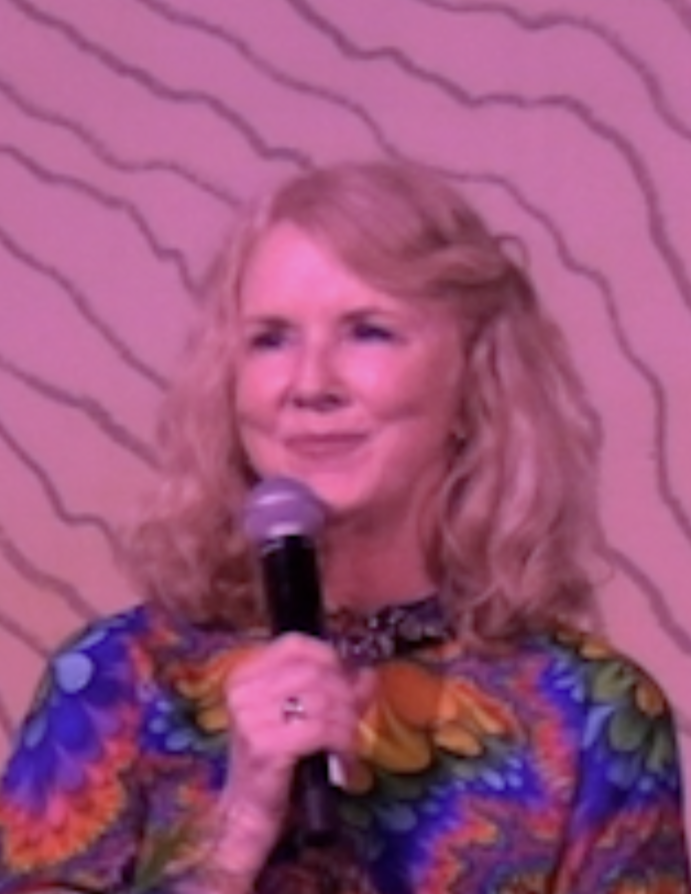 Marian Goodell
Marian Goodell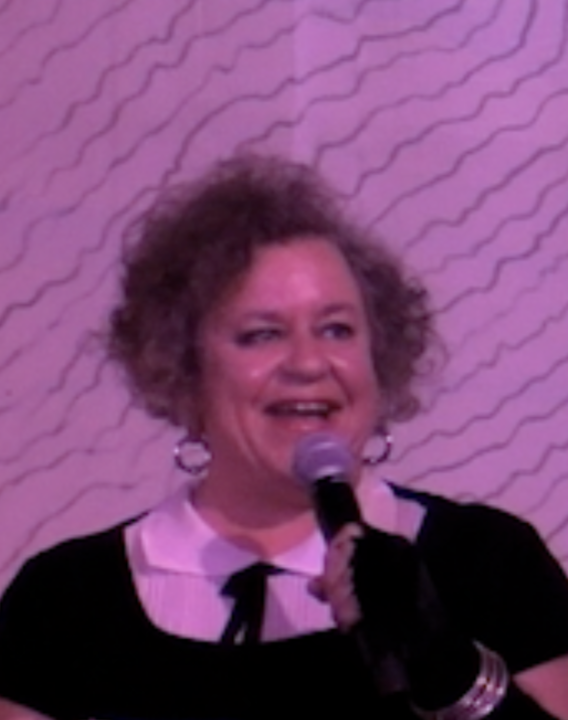 Candace Locklear
Candace Locklear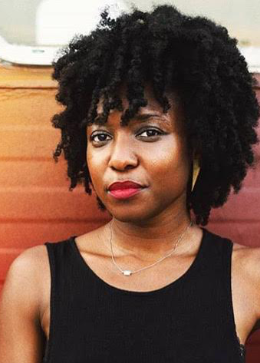 Erin Douglas
Erin Douglas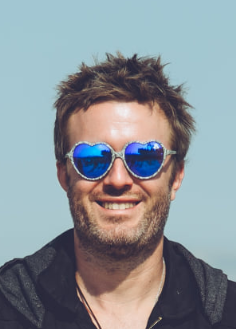 Justin Schaffer
Justin Schaffer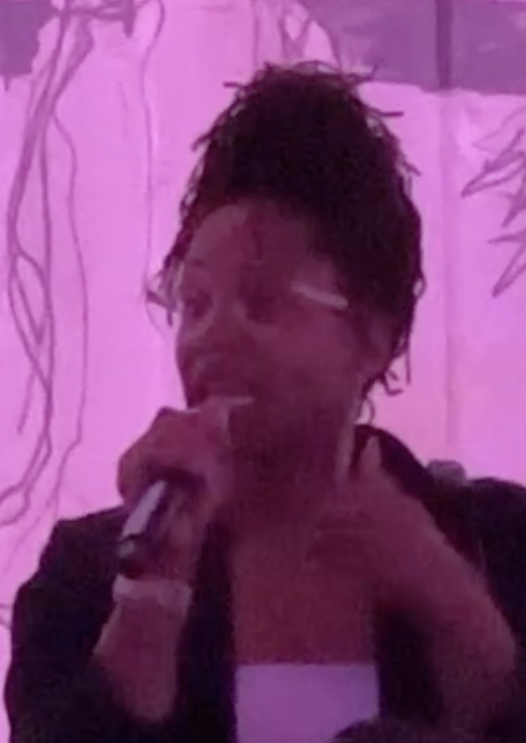 Champagne Hughes
Champagne Hughes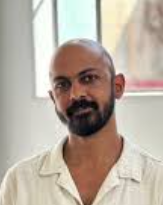 Satya Kamdar
Satya Kamdar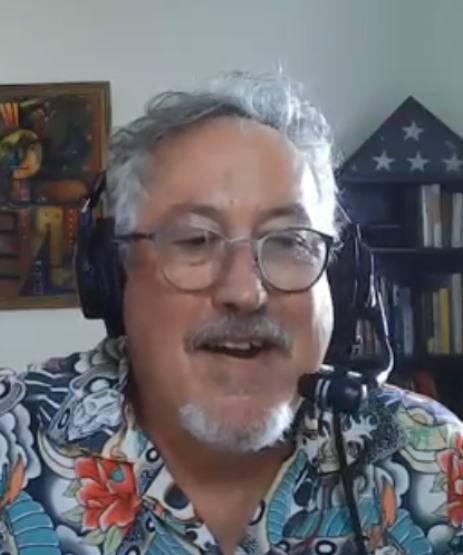 Stuart Mangrum
Stuart Mangrum
